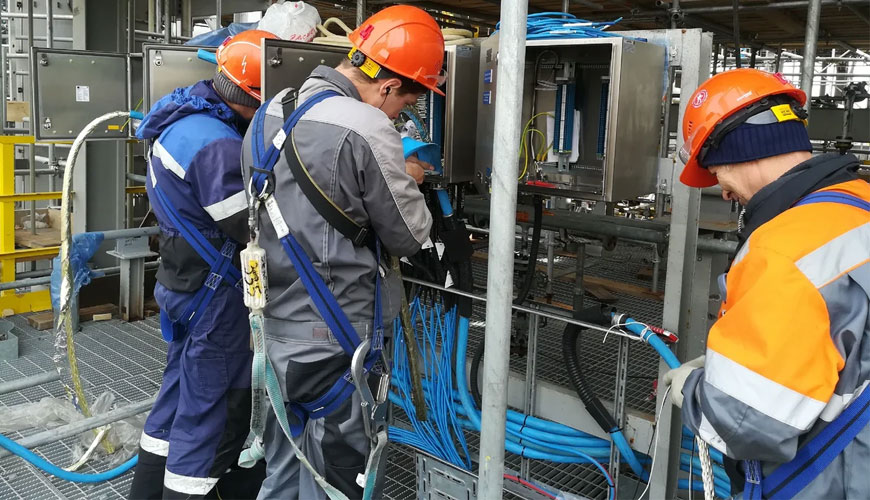

EUROLAB laboratory provides testing and compliance services within the scope of EN 1149-5 standard. This part of EN 1149 describes the characteristics of clothing that provides protection against electrostatic discharge in potentially explosive areas (ATEX environments) such as petrochemical refineries and fuel distribution companies, and presents test methods.

According to the published ATEX directive for the protection of workers at high risk of exposure to explosive atmospheres, workers should be provided with work clothing made of materials that do not cause electrical discharges that could ignite the explosive. Therefore, the outer fabric of these garments should be made of antistatic materials and components.
The EN 1149-5 standard describes electrostatic requirements for safety clothing used in areas where there is a danger of flash electrostatic discharge. The test method in this standard describes the requirements for the materials and design of safety clothing with electrostatic properties to protect workers as best as possible.
Antistatic personal protective equipment with EN 1149-5 certification proves that it meets the EN 1149-1 or EN 1149-3 performance requirements.
Such fabrics direct electrostatic charges thanks to their linear or grid-shaped conductive fibers. The distance between conductive fibers in one direction should not be more than 10 mm anywhere. The outer antistatic layer should permanently cover all other non-antistatic layers. The antistatic coating must be guaranteed in any case. Conductive accessories such as zippers and buttons are also permitted, provided they are covered with an outer antistatic layer. In addition, labels or retroreflective strips must be permanently attached.
These items should be worn outside of the ATEX environment. In addition, people using these clothes must cover the clothing completely and make sure that the grounding is provided. For example, electrostatic shoes should be worn with resistance to distribute the load on the floor.
Our organization also provides testing services for protective clothing - electrostatic properties - Part 5: material performance and design requirements, within the scope of protective clothing tests.
To get an appointment, to get more detailed information or to request an evaluation, you can ask us to fill in our form and reach you.